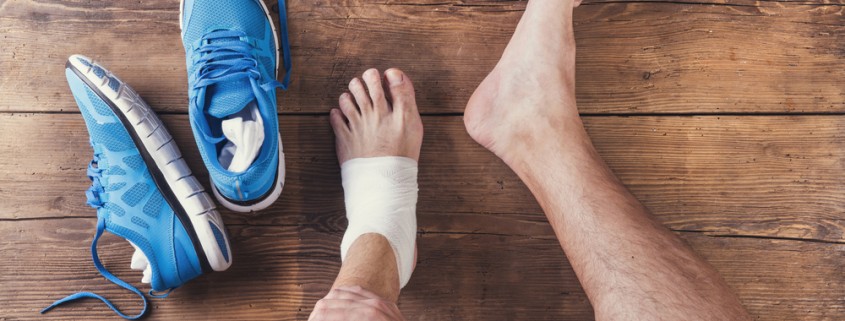5 Common Sports Injuries and How to Prevent Them
Whether you’re an All-American athlete or a weekend warrior that takes part in pick-up games and backyard sessions, sports injuries always pose a potential threat. These injuries can range from minor to severe – some may even require surgery. Luckily, these injuries can be prevented through proper conditioning, warm-ups, technique exercises, and more. Here are 5 common sports injuries and smart ways to prevent them from happening so you can stay in the game:
-
Strains and sprains
Common among athletes of all levels, strains and sprains usually occur in the wrists, ankles, or knees. A strain is most commonly known as a pulled muscle, while sprains occur when ligaments are torn or overstretched. Both of these injuries limit the range of motion in the damaged joint and require ample amount of recovery time.
Preventing these types of injuries require an increase in flexibility and strength. It’s important to condition your body to vigorous exercise prior to any games to ensure the safety of your muscles and joints. Additionally, working on the proper technique for your sport is essential since it can minimize the risk of painful impact and overstretched muscles.
-
ACL injuries
This dreaded injury occurs when the anterior cruciate ligament (ACL) suddenly gets hit from the side, causing the ACL to strain or tear. ACL tears are one of the more severe and common sports injuries that an athlete can get. Surgery is usually required for people with torn ACLs to help them regain their physically active lifestyle.
ACL injuries could be potentially devastating to an athlete’s sports career. Preventing an unfortunate event like this from happening requires knowledge of the correct mechanics of your sport. This means having the proper form when it comes to doing lunges, squats, jumps and landings. If an athlete’s knees or ankles are collapsing on every rep, it greatly increases their risk for an ACL injury. Getting into the habit of practicing the form can significantly decrease the risk factor for this unpleasant injury.
-
Groin pull
Athletes that participate in sports that require running or rapid changes in direction are more likely to receive groin injuries. The muscles that are affected are the “Adductor” muscles, which help bring the legs together. When one your Adductor muscles are pulled, it makes it difficult to kick, jump, and accelerate rapidly.
Preventing a groin pull involves frequent stretching and thorough warm-ups to promote blood flow to the muscles, which in turn increases flexibility.
-
Hamstring strain
Hamstring injuries are common among athletes that over-stretch their hurdles and lift their leg up past their range of motion. This injury is slow to heal since hamstrings are required to walk and are constantly under stress.
Stretching is key when it comes to hamstring injury prevention. Making sure your leg muscles are warmed up before engaging in physical activity can greatly reduce your chances of obtaining this injury. Some examples to help prevent hamstring damages are running and stretching the backs of your legs by touching your toes.
-
Shin splints
A shin splint is a sharp or dull pain that occurs along the shinbone, sometimes extending down to the foot and ankle. This injury is most common among runners, especially those who run on hard surfaces or long distances.
Failing to warm up the shin muscles before running is a common mistake made among all athletes that require running in their sport. Improper running techniques or wearing unsupportive running shoes are also major contributors to shin splints and can make it painful to walk or even stand.
Overall, no matter what sport you participate in, it’s important to remember to warm-up your body before engaging in any type of vigorous activity. Working out daily and conditioning your body can produce double the benefits, giving you the ability to maintain a healthy body while still being able to stay in the game during the weekends.





